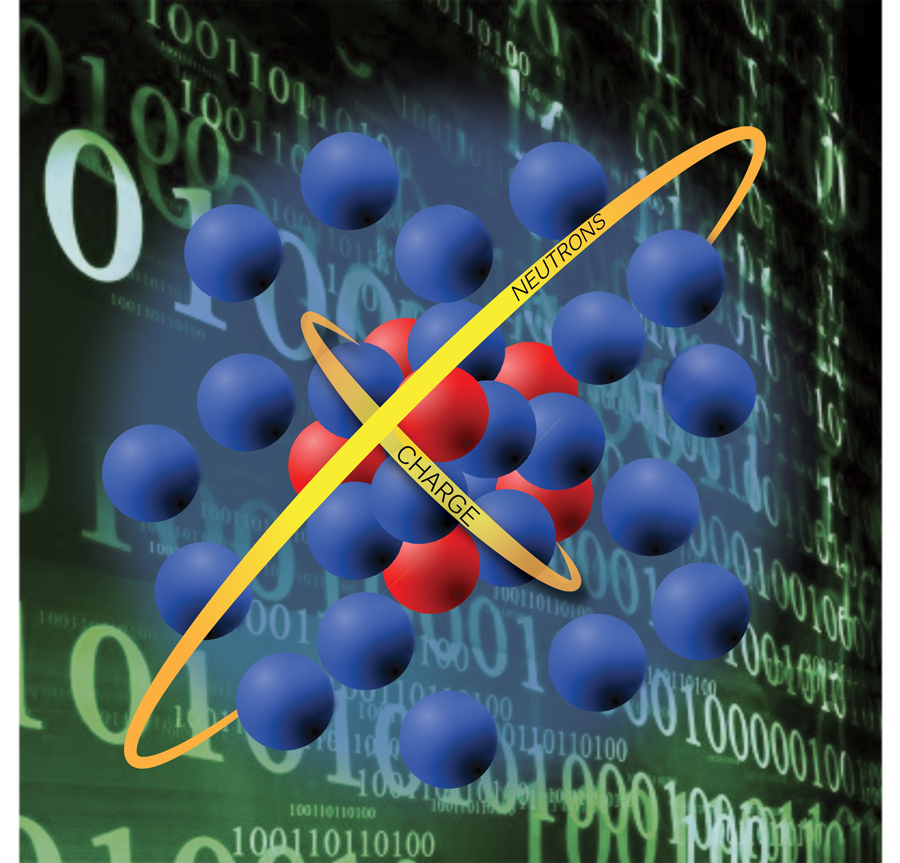How Big is a Nucleus?
by Morten Hjorth-Jensen
Where do atomic nuclei come from? How are they organized? Why is matter stable? What are their practical and scientific uses?
The answers to these and many other questions are central overarching aims and intellectual challenges of basic research in nuclear physics. To relate the existence and properties of nuclei to the underlying fundamental forces and laws of motion, is central to present and planned facilities like the Facility for Rare Ion Beams at Michigan State University.
In an article published in Nature Physics, entitled "Neutron and weak-charge distributions of the 48Ca nucleus”, authored by Dr. Gaute Hagen of Oak Ridge National Laboratory in Tennessee and his collaborators, amongst these Witek Nazarewicz and Morten Hjorth-Jensen from MSU, advanced computational tools and sophisticated theoretical models have been used to compute the neutron density and related observables of the doubly-magic nucleus calcium-48 (a nucleus with 20 protons and 28 neutrons). The authors obtain an excellent agreement with experiment for the radius of the charge distribution and predict that the neutron radius of calcium-48 is smaller than previously thought. The authors provide predictions for the electric dipole polarizability and the weak form factor, quantities that are currently targeted by precision measurements worldwide. The authors point also to how the predicted neutron distribution can be used to constrain the size of neutron stars, opening up for a better understanding of the link between the physics of minute objects like nuclei and massive stellar objects like neutron stars.
The progress achieved enables a quantitative description of nuclei based on first principles. The obtained results offer new insights into neutron-rich matter and illuminate how features of nuclear forces determine the basic properties of atomic nuclei. This work has significant consequences for our basic understanding of nuclei.
Combined with the exciting experimental program at present and planned experimental facilities worldwide, there is great hope that within the next two decades, researchers will be able to gain deeper insights about our fascinating microscopic world, impacting intellectual challenges like why matter is stable and how the elements are formed. 
This conceptual art illustrates the different sizes of proton (charge) and neutron distributions in calcium-48, calculated by nuclear physicists with the help of fastest supercomputers available for public research.



